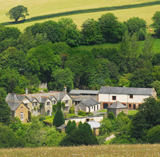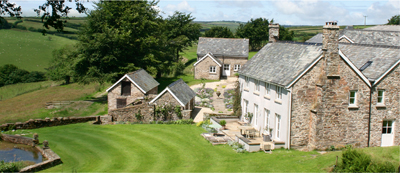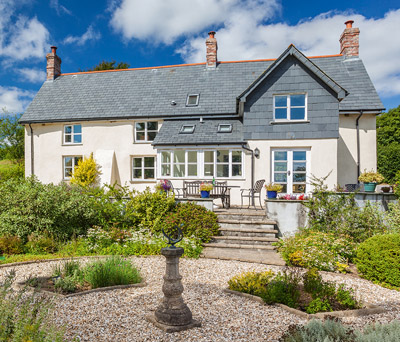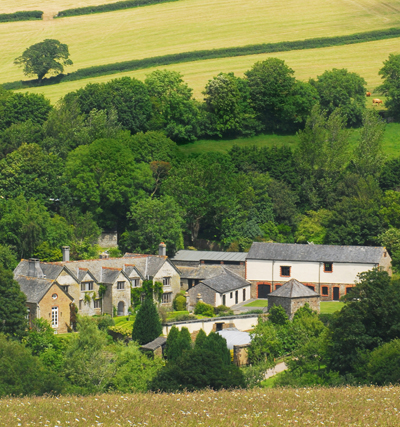Stamp Duty: The lowdown
Employing a mixed-use tag onto your property could save on stamp duty for the buyer


As the rural property market tries to absorb the impact of the increased levels of Stamp Duty Land Tax (SDLT) imposed on residential property in last year's budget, Martin Lamb, regional director of Savills in the South-West, highlights an aspect of the debate that may not have registered with prospective country-house buyers and vendors, or even their legal advisers. ‘In the March 2012 budget, SDLT was increased on residential property to 7% on sale prices over £2 million and 5% on sales between £1 and £2 million. At the same time, the rate of duty payable on non-residential and mixed-use property remained unchanged, at 4% on sales over £500,000.
'HM Revenue and Customs' website defines a "mixed use property" as one that incorporates "both residential and non-residential elements" and, in the case of farms and estates, everyone knows that the Stamp Duty rate is 4%,' explains Mr Lamb.
‘It's a different story in the case of country houses. For instance, a private house with a coach house, garden and a few acres of amenity land is normally considered residential and SDLT will be payable at 7%. But if the coach house is converted and let or used as a holiday cottage and the land is used for agricultural purposes, then the property may be classified as mixed-use, in which case only 4% will be payable,' he continues.
‘From a buyer's point of view, the implications are considerable. In the case of a purely residential property, a sale at £2.1m means £147,000 of Stamp Duty payable; for a mixed-use property, the duty payable at 4% is £84,000- a difference of £63,000'. Mr Lamb adds: ‘An estate agent should be able to tell buyers with certainty that they will only have to pay 4% SDLT on a property that is offered for sale as mixed-use.
However, it's the buyer who is liable for the payment and, at the end of the day, the amount paid will be decided by their solicitor, who may be cautious, ill-informed, or unwilling to risk falling foul of the Revenue should his client be perceived to be trying to ‘get away with" paying the lower rate, even if there are genuine grounds for doing so. It all makes for difficulty and uncertainty in what is already a difficult market.' The question of mixed use is undoubtedly a ‘grey area' in relation to country houses, says William Michelmore, senior partner of Michelmores solicitors in Exeter.
However, he points out that HMRC already accepts the principle of secondary residential buildings being charged for SDLT purposes at a rate lower than that charged for the main house, although separate returns must be filed for each property.
Reducing the value of the house
Sign up for the Country Life Newsletter
Exquisite houses, the beauty of Nature, and how to get the most from your life, straight to your inbox.
Michelmores recently acted on behalf of the buyer in the sale, at £2.2m, of a country house with a garden, grounds, some agricultural land and woodland.
By valuing the farmland and woodland separately from the main house, they were able to reduce the value of the house to less than £2m, thereby incurring an SDLT rate of 5% rather than 7%- still a considerable saving. So far, HMRC appears to be going along with ‘reasonable' proposals for splitting property values and completing separate SDLT returns in respect of the various elements, but it would be inadvisable to ‘push your luck', Mr Michelmore suggests.
According to HMRC guidelines, ‘gardens and grounds' include land that is needed for ‘the reasonable enjoyment of the dwelling', having regard to its nature and size. And therein lies the rub: for although a quarter of an acre of garden would be considered more than adequate for a three-bedroom country cottage, in the case of a large country house, 20 or 30 acres of gardens, grounds and grazing land might be considered necessary for the reasonable enjoyment of the dwelling, unless some of the acreage has been used historically for genuine agricultural purposes.
Land can, of course, be lotted and sold off separately, but what you cannot do is simply carve it up and sell it, as one or more lots, to the buyer of the main house in order to reduce the overall Stamp Duty liability. Such a process would be an ‘associated transaction' of the main sale and taxable at the same rate as the main house, so no easy option there.
What does it hinge on?
How, then, could a freehold estate consisting of a mansion, stable block and four acres of gardens, together with 12 flats and houses for domestic and estate workers and farm buildings but only 50 acres of farmland, sell for £12m, yet only be liable for 4% on the whole transaction? It all hinges on the fact that, for SDLT purposes, ‘a single transaction in six or more dwellings is treated as a non-residential transaction'. Michelmores' tax expert Brian Garner points towards HMRC's guidance on the matter: ‘The transaction involves the acquisition of a total of 13 dwellings-the mansion, the flats and the houses. The mansion, stable block and gardens are treated as part of a single dwelling. The value attributed to dwellings is £8m and the remaining value attributed to the farm buildings and farmland is £4m.
‘The rate of tax applicable to the dwellings is therefore £8m divided by 13-that is, £615,385-so the rate of tax is 4%. The rate on the remaining £4m is also 4%, because the farm buildings and farmland are non-residential property and the transaction as a whole is a "mixed" transaction, so the nonresidential scale of rates applies. The whole transaction is therefore taxed at 4%,' Mr Garner concludes. What comfort can buyers of country properties with fewer than six dwellings take from all this, given that, as far Stamp Duty liability is concerned, it's always a matter of caveat emptor?

Shircombe Farm sold for around £2m through Savills
In the case of a mixed-use residential farm, such as the picturesque, 182-acre Shircombe Farm at Dulverton, Somerset, which sold for ‘about £2m' through Savills, the liability was a clear-cut 4%.

Greylands Farm is classified as mixed-use for stamp duty purposes
The same rate applies in the case of 170-acre Greylands Farm near Holsworthy, Devon, which has a four bedroom period farmhouse, three holiday cottages, an 80kW wind turbine (producing £49,000 a year) and a range of modern farm buildings, and is currently for sale through Savills (01392 455755) at a guide price of £2.2m.
In the interest of fairness, the same clarity should be applied to a country property such as Ranscombe Manor near Kingsbridge, Devon-currently for sale through Marchand Petit (01548 857588) and Savills at a guide of £3m.

Ranscombe Manor arguably fulfils the criteria, says Martin Lamb from Savills
Given HMRC's own definition of mixed use, cited above, Ranscombe Manor arguably fulfils the criteria, says Mr Lamb, in that it has an integral cottage, a studio apartment, a courtyard of buildings with planning consent for four residential dwellings and 33 acres of land, including grazing and woodland. The entire property should therefore be taxed for SDLT purposes at 4%, not merely split into residential and non-residential components.
Given the considerable sums involved in the case of properties valued at more than £2m, Mr Lamb agrees that this is a debate that needs to be aired, but one that probably won't be settled outside a court room.
* Follow Country Life property on Twitter
Country Life is unlike any other magazine: the only glossy weekly on the newsstand and the only magazine that has been guest-edited by HRH The King not once, but twice. It is a celebration of modern rural life and all its diverse joys and pleasures — that was first published in Queen Victoria's Diamond Jubilee year. Our eclectic mixture of witty and informative content — from the most up-to-date property news and commentary and a coveted glimpse inside some of the UK's best houses and gardens, to gardening, the arts and interior design, written by experts in their field — still cannot be found in print or online, anywhere else.
-
 Diamonds are everyone's best friend: The enduring appeal of one of Nature's sparkliest treasures
Diamonds are everyone's best friend: The enduring appeal of one of Nature's sparkliest treasuresEvery diamond has a story to tell and each of us deserves to fall in love with one.
By Jonathan Self Published
-
 Hidden excellence in a £7.5 million north London home
Hidden excellence in a £7.5 million north London homeBehind the traditional façades of Provost Road, you will find something very special.
By James Fisher Published
